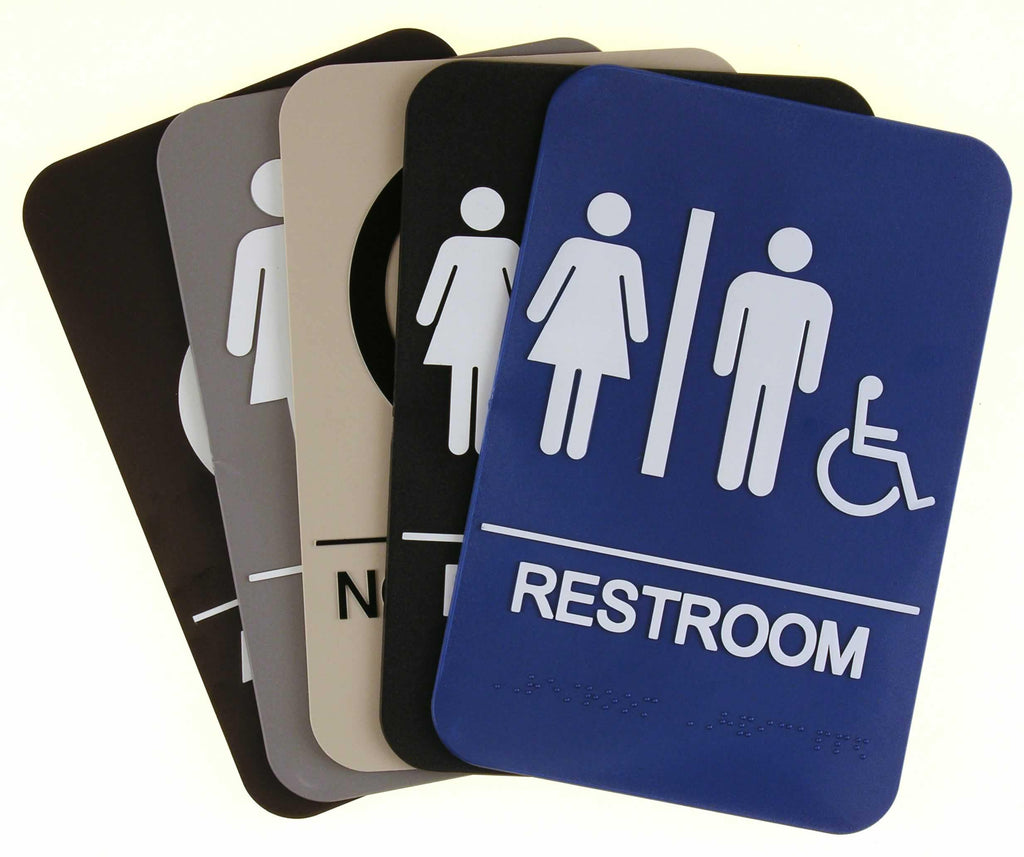Understanding the Rules Behind ADA Signs
Understanding the Rules Behind ADA Signs
Blog Article
Discovering the Secret Features of ADA Indications for Enhanced Access
In the realm of accessibility, ADA indicators function as quiet yet powerful allies, making sure that spaces are accessible and comprehensive for individuals with disabilities. By integrating Braille and responsive elements, these indications break barriers for the visually damaged, while high-contrast shade systems and legible typefaces satisfy varied visual needs. Moreover, their tactical positioning is not approximate however instead a calculated initiative to help with seamless navigation. Beyond these features lies a deeper narrative about the advancement of inclusivity and the continuous dedication to producing fair rooms. What extra could these signs indicate in our pursuit of global availability?
Value of ADA Conformity
Ensuring conformity with the Americans with Disabilities Act (ADA) is important for cultivating inclusivity and equal access in public rooms and workplaces. The ADA, passed in 1990, mandates that all public centers, companies, and transport solutions accommodate individuals with specials needs, guaranteeing they enjoy the very same legal rights and chances as others. Conformity with ADA criteria not just fulfills legal commitments yet additionally boosts an organization's track record by showing its dedication to variety and inclusivity.
One of the essential facets of ADA conformity is the implementation of obtainable signs. ADA indications are made to guarantee that people with specials needs can quickly browse with rooms and buildings.
Moreover, sticking to ADA policies can mitigate the threat of legal consequences and potential penalties. Organizations that fail to follow ADA standards might face charges or suits, which can be both monetarily troublesome and damaging to their public picture. Therefore, ADA compliance is important to fostering a fair atmosphere for everyone.
Braille and Tactile Elements
The unification of Braille and tactile aspects right into ADA signs personifies the concepts of accessibility and inclusivity. It is generally put beneath the corresponding message on signs to make sure that individuals can access the info without visual help.
Tactile elements expand past Braille and include increased symbols and characters. These elements are made to be discernible by touch, allowing individuals to determine room numbers, washrooms, departures, and other crucial locations. The ADA establishes specific guidelines concerning the dimension, spacing, and positioning of these responsive components to enhance readability and ensure uniformity throughout various atmospheres.

High-Contrast Color Pattern
High-contrast color design play a crucial function in boosting the exposure and readability of ADA signage for individuals with aesthetic problems. These plans are vital as they maximize the distinction in light reflectance between text and history, making sure that signs are quickly discernible, also from a range. The Americans with Disabilities Act (ADA) mandates making use of particular shade contrasts to fit those with minimal vision, making it an essential aspect of conformity.
The effectiveness of high-contrast shades lies in their capability to stand out in various lights problems, consisting of dimly lit atmospheres and locations with glare. Typically, dark text on a light background or light message on a dark history is employed to accomplish optimum contrast. As an example, black text on a yellow or white history provides a plain visual distinction that aids in quick recognition and understanding.

Legible Fonts and Text Size
When taking into consideration the layout of ADA signage, the option of understandable font styles and proper text size can not be overstated. The Americans with Disabilities Act (ADA) mandates that font styles must be sans-serif and not italic, oblique, manuscript, extremely ornamental, or of unusual type.
According to ADA guidelines, the minimal message height should be 5/8 inch, and it must enhance proportionally with watching distance. Uniformity in text dimension contributes to a natural aesthetic experience, helping people in navigating settings efficiently.
In addition, spacing in between letters and lines is indispensable to legibility. Ample spacing avoids personalities from appearing crowded, boosting readability. By adhering to these requirements, developers can substantially boost availability, ensuring that signs offers its intended function for all people, regardless of their visual capabilities.
Efficient Placement Methods
Strategic placement of ADA signs is important for optimizing access and making certain conformity with legal standards. ADA standards specify that indicators must be installed at a height in between 48 to 60 inches from the ground to guarantee they are within the line of sight for both standing and seated individuals.
Furthermore, signs have to be put adjacent to the latch side of doors to permit very easy recognition before entry. Consistency in sign placement throughout a center enhances predictability, decreasing confusion and enhancing overall individual experience.

Conclusion
ADA indicators play an essential function in advertising availability by incorporating attributes that attend to the check needs of individuals with specials needs. These components jointly foster a comprehensive environment, underscoring the significance of ADA compliance in making sure equal accessibility for all.
In the realm of availability, ADA signs serve as silent yet effective allies, making sure that areas are inclusive and accessible for people with specials needs. The ADA, passed in 1990, mandates that all public facilities, companies, and transport services accommodate individuals with disabilities, guaranteeing they appreciate the exact same find out this here rights and chances as others. ADA Signs. ADA signs are designed to make certain that individuals with disabilities can conveniently navigate through spaces and structures. ADA guidelines stipulate that signs need to be installed at a height in between 48 to 60 inches from the ground to ensure they are within the line of view for both standing and seated individuals.ADA signs play a vital function in promoting access by integrating attributes that attend to the requirements of people with impairments
Report this page